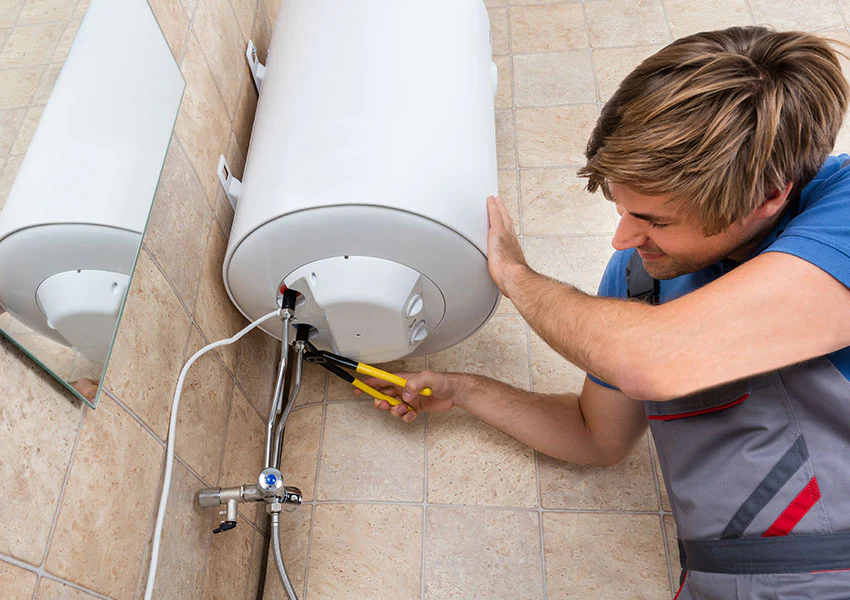They are making a number of good annotation about Water Heater Maintenance Tips You Can't Afford to Forget as a whole in the article which follows.

Hot water is necessary for day-to-day convenience, whether it's for a rejuvenating shower or washing meals. To ensure your hot water system runs efficiently and lasts much longer, normal upkeep is essential. This article provides sensible suggestions and insights on just how to maintain your home's warm water system to prevent disruptions and expensive repairs.
Intro
Preserving your home's hot water system could appear challenging, but with a few simple steps, you can ensure it runs smoothly for several years to find. This guide covers every little thing from comprehending your warm water system to DIY upkeep ideas and knowing when to call professional aid.
Significance of Preserving Your Hot Water System
Regular upkeep not just extends the lifespan of your warm water system however also guarantees it runs effectively. Neglecting upkeep can cause decreased performance, greater energy bills, and even early failure of the system.
Indicators Your Hot Water System Needs Maintenance
Recognizing when your hot water system requires attention can protect against major concerns. Look out for indications such as inconsistent water temperature, weird noises from the heating system, or rusty water.
Comprehending Your Warm Water System
Before diving right into upkeep tasks, it's practical to understand the fundamental parts of your hot water system. Normally, this includes the water heater itself, pipelines, anode rods, and temperature controls.
Month-to-month Maintenance Tasks
Normal monthly checks can help catch minor problems prior to they rise.
Purging the Hot Water Heater
Flushing your water heater gets rid of sediment buildup, boosting effectiveness and prolonging its life.
Monitoring and Changing Anode Rods
Anode poles protect against rust inside the storage tank. Examining and changing them when broken is vital.
Checking and Changing Temperature Setups
Readjusting the temperature level settings ensures optimum performance and safety.
Do It Yourself Tips for Upkeep
You can perform several maintenance jobs on your own to maintain your warm water system in leading condition.
Checking for Leakages
Routinely examine pipelines and links for leaks, as these can cause water damages and higher bills.
Evaluating Pressure Alleviation Valves
Evaluating the stress relief valve guarantees it functions properly and protects against too much pressure build-up.
Protecting Pipes
Shielding hot water pipelines lowers warm loss and can save energy.
When to Call a Professional
While do it yourself maintenance is advantageous, some issues call for expert knowledge.
Complex Issues Calling For Expert Help
Instances consist of major leakages, electrical problems, or if your water heater is regularly underperforming.
Routine Professional Upkeep Perks
Expert maintenance can include thorough examinations, tune-ups, and making sure compliance with safety criteria.
Verdict
Routine maintenance of your home's warm water system is crucial for efficiency, longevity, and expense savings. By complying with these suggestions and understanding when to seek professional help, you can ensure a dependable supply of hot water without unexpected disturbances.
Water Heater Maintenance Tips
Test the TPR Valve
- Shut off the power and the cold-water supply valve.
- Place a bucket under the pipe connected to the temperature-pressure-release (TPR) valve on the top or side of the tank. (This valve opens if the tank pressure gets too high.)
- Lift the valve’s tab to let some water out, then let go. If water keeps flowing, drain the tank partway, unscrew the old valve with a pipe wrench, and install a new one.
Check the Anode Rod
- Put a hose to the tank’s drain cock and let out a few gallons of water.
- Now fit a 1 1/16-inch socket onto the rod’s hex head on top of the heater (or under its top plate) and unscrew the rod. If it’s less than ½ inch thick or coated with calcium, buy a new one, wrap its threads with Teflon tape, put it back in the tank, and tighten securely. Use this segmented rod if headroom above the tank is limited.
Drain the Tank and Wash Out Sediment
- Drain the remaining water in the tank into the bucket, then stir up the sediment on the tank’s bottom by briefly opening the cold-water supply valve. Drain and repeat until clean water comes out of the hose.
- Close the drain cock, refill the tank, and turn its power back on.
Adjust the Temperature
- Find the temperature dial on the side of the tank and unscrew its cover. Adjust the dial to 120 degrees using a flathead screwdriver. For every 10 degrees the temperature is lowered, you can expect to save up to 5 percent in energy costs.
- Turn the water heater off or the thermostat down to its lowest setting if you plan to be away from home for more than three days.
Insulate the Pipes
- Buy some self-sticking 3/8-inch-thick foam pipe insulation that matches the pipes’ diameter.
- Slide the foam over the hot-and cold-water pipes as far as you can reach. Insulating the cold-water pipe prevents condensation in summer.
- Peel the tape and squeeze the insulation closed. If the pipe is 6 inches or less from the flue, cover it with 1-inch-thick unfaced fiberglass pipe wrap.
https://www.thisoldhouse.com/plumbing/21016402/how-to-maintain-a-water-heater
:max_bytes(150000):strip_icc()/how-to-drain-a-water-heater-2719055-hero-35f0548b0f1f42f0b13ba96a33ab8da2.jpg)
I stumbled upon that piece of writing on Water Heater Maintenance Tips You Can't Afford to Forget while doing research the internet. Appreciated our blog posting? Please share it. Help somebody else discover it. I cherish your readership.
Explore
Comments on “Ensuring Longevity of Your Home's Hot Water System: Care TipsSimple Ways to Care for Your Home's Hot Water System EffectivelyExpert Advice on Maintaining Your Home's Hot Water System”